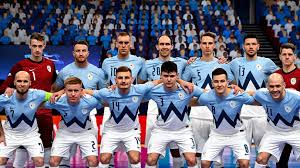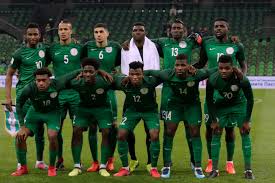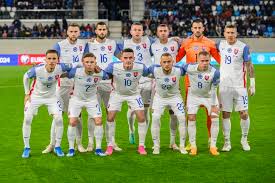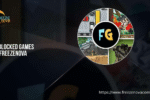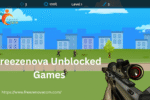Romania’s stunning rollercoaster at EURO 2024 wasn’t just a tale of grit—it was a tactical masterclass in disguise. In a move that shocked even local analysts, head coach Edward Iordănescu quietly ditched his beloved 4-2-3-1 after their group-stage stumble against Belgium.
The silent shift to a dynamic 3-4-3 wasn’t officially acknowledged, but heatmaps and passing lanes told the full story. Most notably, the change came mid-tournament—an unorthodox decision that caught opponents off guard and breathed new life into the team.
The flexibility and risk paid off in the short term and may define the team’s identity moving forward. Alongside this shift, three uncapped diaspora players are knocking at the door—each one poised to leave their mark in the Nations League.
Post-EURO 2024 Tactical Analysis
Romania’s group-stage resurrection was the result of tactical innovation rather than pure luck. Initially outplayed in a flat 4-2-3-1 against Belgium, Iordănescu pivoted to a 3-4-3 setup that allowed Romania to maximise its midfield transitions and defensive solidity.
The key change? Pushing the wingbacks higher and trusting a three-man defence anchored by Dragusin. The team found new energy, dominating possession and width against Ukraine. This tactical evolution was not only necessary but also signalled Romania’s readiness to compete with Europe’s elite.
The heatmap comparison between both systems highlights better defensive compression and higher attacking pressure with the new formation.
Iordănescu’s Risk: Why He Changed the Shape
Critics were quick to pounce after Romania’s limp display against Belgium. Yet, instead of doubling down, Iordănescu gambled—and it worked. The 3-4-3 formation created balance, giving more creative license to attacking midfielders like Stanciu while adding stability at the back. Most importantly, it restored confidence and tactical identity.
The flexibility also allowed full-backs to attack more, giving Romania another dimension. Tactical courage, not conservatism, defined this Romanian side, and it’s a blueprint worth carrying forward.
Defensive Wall: Drăgușin’s Breakout Tournament
One of the most consistent players in the tournament, Radu Drăgușin, stood as a towering presence for Romania. Averaging 19 clearances per game, he ranked among the top 5% of defenders at EURO 2024. His positioning, timing, and command of aerial duels made him the linchpin of the new defensive system.
What sets him apart is his composure under pressure and ability to launch counters with pinpoint passes. His performances earned praise from pundits and scouts alike, with several top clubs now circling.
Fixture Pressure: What Lies Ahead in 2024-25
The road ahead is riddled with tests. Romania’s calendar offers little respite, starting with a fiery rematch against Kosovo in September. The narrative? Revenge. Then comes Cyprus in October—another must-win if promotion in the Nations League is to be secured. But the ultimate litmus test awaits in November against France.
That game will reveal whether Romania can truly graduate from regional contender to global force.
| Match | Date | Stakes |
| vs. Kosovo | Sep 7, 2024 | Nations League revenge |
| vs. Cyprus | Oct 12, 2024 | Must-win for promotion |
| vs. France | Nov 15, 2024 | World Cup qualifying benchmark |
Kosovo & Cyprus Threat: Nations League Stakes
Kosovo poses a unique challenge—physical, high-tempo football that overwhelmed Romania in their last meeting. The scars of that match remain fresh, making this clash emotionally charged. Cyprus, while not as fearsome on paper, offers a trap game scenario.
Romania must avoid complacency and bring intensity, especially with promotion on the line. These two matches could very well determine the momentum going into the World Cup qualifiers.
Date with Destiny: Romania vs France
Facing France in a competitive fixture is more than symbolic—it’s a trial by fire. Romania’s revamped structure will face its ultimate examination. If Iordănescu’s side can remain compact, capitalise on set-pieces, and exploit defensive lapses, they could shock the world.
More than anything, this match offers a chance to prove the tactical shift wasn’t a one-off but a permanent evolution.
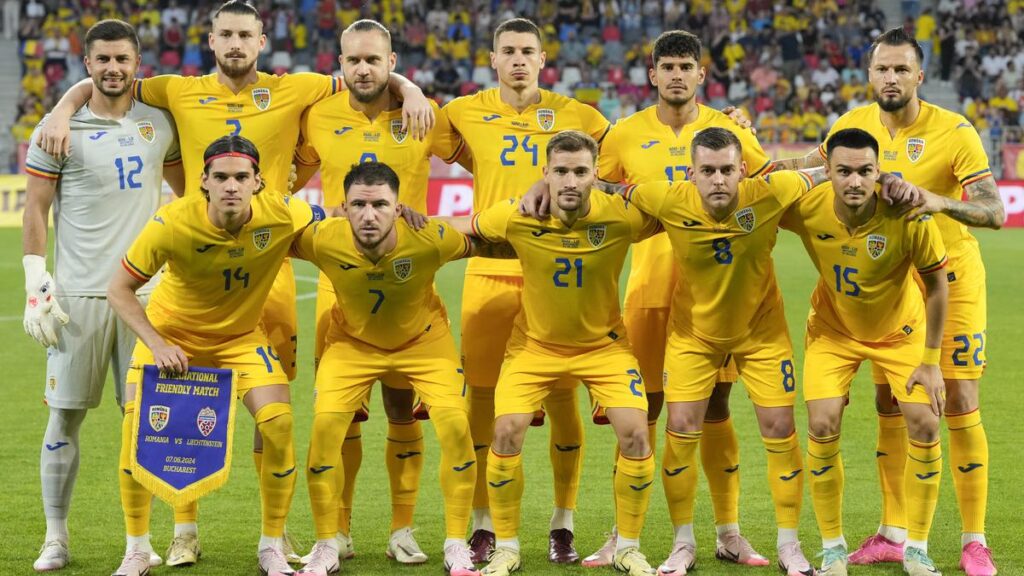
Set-Piece Supremacy: Romania’s Secret Weapon
An astonishing 87% of Romania’s goals in 2024 came from dead-ball situations—a statistic that demands attention. Nicolae Stanciu’s curved deliveries from corners maintain an 87% precision rate, consistently finding Dragusin’s smart near-post runs.
This set-piece dominance isn’t by accident—it’s a drilled art, refined in every training camp. Set-pieces may not be glamorous, but they’ve been Romania’s golden goose all year.
Arena Națională: Romania’s Fortress Advantage
There’s something about Bucharest that transforms this team. With a 72% win rate at Arena Națională, the venue is more than just home—it’s a bastion. The crowd, the pitch dimensions, the atmosphere—it all clicks for Romania.
This “fortress effect” gives them an edge, especially in tight Nations League matches. Home form could be the decisive factor in their promotional dreams.
The Left Flank Problem
No team is perfect, and Romania’s Achilles heel lies on their left flank. Data reveals that opponents consistently create 1.7 expected goals (xGA) per game from that side. Whether due to defensive lapses, tactical gaps, or lack of pace, this area remains vulnerable.
Iordănescu must address this before stronger teams fully exploit it. Tactical reshuffling or introducing a defensively solid wingback could be the fix Romania desperately needs.
Meet the Future: Rising Romanian Stars
Romania’s future shines brightly with a wave of talented youngsters making headlines across Europe. These aren’t just academy names—they’re ready for the senior jump. These include players who are not just promising on paper but are already gaining minutes in competitive leagues.
The challenge lies in integrating them without disrupting the team’s chemistry. With the right balance, they could transform Romania into a tournament dark horse.
Mateo Joseph: From Leeds to România?
Born in Spain, raised in England, and eligible for Romania through his mother, Mateo Joseph is the definition of a modern footballer. He’s quick, technical, and goal-hungry. Despite being uncapped, his potential has caught the eye of the Romanian federation.
If secured, he could provide the clinical edge Romania has lacked in tight matches. Convincing him will be key to expanding the diaspora pipeline.
Adrian Mazilu: Romanian Robben Emerges
A left-footed right winger who cuts inside with ruthless efficiency, Adrian Mazilu is already drawing comparisons to Arjen Robben. Currently on Brighton’s radar, Mazilu brings flair and directness that Romania often lacks.
His dribbling, coupled with a keen eye for goal, makes him a dangerous asset. He’s young, raw, but undeniably exciting. A call-up seems not only deserved but inevitable.
Alexandru Pantea: FCSB’s Teenage Prodigy
Only 16, yet Alexandru Pantea is already turning heads in Liga I with FCSB. A right-back by position but a creator at heart, his maturity defies his age. Technically gifted and tactically disciplined, Pantea is a project worth fast-tracking in the long term.
While it’s early, few players exhibit their poise under pressure at such a young age. Romania may have found their next defensive general.
Watching Romania from Anywhere
Catching Romania’s journey has never been easier—or more diverse. Fans in Romania can subscribe to Digi Sport for complete access at just €9 per month. In North America, FuboTV provides live streams with English commentary.
For global fans or budget-conscious viewers, UEFA.tv remains a solid option for delayed highlights and tactical recaps. Wherever you are, there’s a way to stay connected.
Inside the Ultras: Peluza Nord’s Passion
Romania’s Ultras culture is deeply rooted in identity and pride. Peluza Nord, the most vocal fan group, creates an intimidating atmosphere for visiting teams. Their choreographies, chants, and flags ignite the stadium, often turning it into a psychological battlefield.
Beyond support, they influence squad morale and push the team to greater heights. Understanding this fan culture is essential to grasping Romania’s home advantage.
Knockoff Kings: Best vs Official Kits
Let’s face it—$90 for an official jersey can be steep. But fans have found creative workarounds. Knockoff kits available for around $25 are flooding the market, and some look shockingly close to the originals. However, the quality varies.
Official kits offer better material and fit but come at a cost. Whether you’re team authentic or team budget, you’ve got options.
Predicting Romania’s Nations League Run
Statistical models give Romania a 58% chance of promotion in the upcoming Nations League campaign. This figure factors in home advantage, squad depth, and tactical flexibility. Kosovo and Cyprus are hurdles, but beatable ones.
If Romania maintains its set-piece threat and shores up defensively, they’re likely to top the group. However, any slip-up could reignite past heartbreak.
Can Romania Make the 2026 World Cup?
Looking beyond the Nations League, Romania’s ambitions stretch to the global stage. The 2026 World Cup qualifiers are brutal—drawn alongside European giants like France. But this is not the Romania of old.
With tactical evolution, youth integration, and solid home form, they have a genuine shot. Success will require consistency, clinical finishing, and perhaps a dash of luck.
Final Thoughts: A Nation in Tactical Transition
Romania is no longer a team defined by its past. The ghosts of the Hagi era have given way to a more fluid, modern identity. Tactical adjustments, youthful energy, and a passionate fan base signal a new dawn.
Whether it’s the Nations League or the World Cup, Romania is no longer just participating—they’re aiming to compete. As the saying goes, this isn’t just a team—it’s Romania’s fastest football evolution in decades.
Read Also: Play Unblocked Google Games at School 2024
Conclusion
The Romania national football team games in 2024 have signalled more than just a competitive season—they’ve marked a turning point in the nation’s football identity. With bold tactical changes, an emphasis on youth development, and a passionate home crowd, Romania is not just preparing for the future—it’s rewriting it.
The integration of uncapped talents, dominance in set-pieces, and the evolution of their formation all hint at a team ready to compete on the biggest stages. Whether it’s the Nations League or the road to the 2026 World Cup, Romania’s journey is one to watch—and perhaps, to believe in.
FAQs
What formation did Romania switch to during EURO 2024?
Romania shifted from a 4-2-3-1 to a 3-4-3 after their loss to Belgium, which allowed better midfield balance and defensive security.
Who is Radu Drăgușin, and why is he important?
Drăgușin is Romania’s defensive leader, recording 19 clearances per game at EURO 2024, ranking in the top 5% of all defenders.
Can Romania qualify for the 2026 World Cup?
Yes, with a consistent tactical approach and player integration, Romania stands a real chance of qualifying from their group.
Where can fans watch the Romania national football team games live?
Digi Sport (Romania), FuboTV (North America), and UEFA.tv (for highlights) are the top platforms.
Who are the top Romanian youth prospects to watch?
Mateo Joseph, Adrian Mazilu, and Alexandru Pantea are emerging stars expected to break into the senior squad soon.




